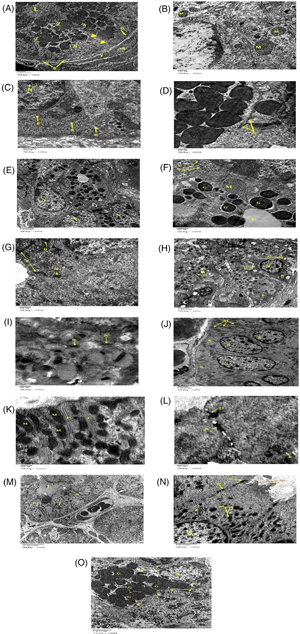No CrossRef data available.
Article contents
The Prospective Effect of Cinnamon and Chia on Submandibular Salivary Glands After Ciprofloxacin Administration in Albino Rats (Histological, Histochemical, and Ultrastructural Study)
Published online by Cambridge University Press: 05 July 2022
Abstract

Ciprofloxacin (CPFX®) is potent fluoroquinolone but has severe side effects. Cinnamon (CIN) and chia seeds are potent antioxidants. The current work aimed to compare the effect of CIN extract and chia seeds on CPFX®-treated submandibular salivary glands (SMGs). Thirty-two male albino rats were divided into four groups: Group 1: received saline. Group 2: received CPFX®. Group 3: received CIN extract after 4 h of CPFX® administration. Group 4: received ground chia seeds after 4 h of CPFX® administration. After 10 days, histological, histochemical, and ultrastructural examinations were done. Different examinations illustrated normal features of SMG in Groups 1 and 3. Group 2 showed degenerative signs. Group 4 showed normal features in some areas. Statistical results illustrated that Group 2 had highest mean vacuolation area%. Highest mean of PAS optical density (OD) was for Group 2. Concerning mercuric bromophenol blue stain OD; Group 1 showed highest mean OD. CPFX® has the deteriorative effect on SMG structure and ultrastructure. It leads to increased levels of glycosaminoglycans (GAGs) and decreased levels of total proteins. CIN extract showed more ameliorative effect compared to chia seeds.
- Type
- Biological Applications
- Information
- Copyright
- Copyright © The Author(s), 2022. Published by Cambridge University Press on behalf of the Microscopy Society of America


